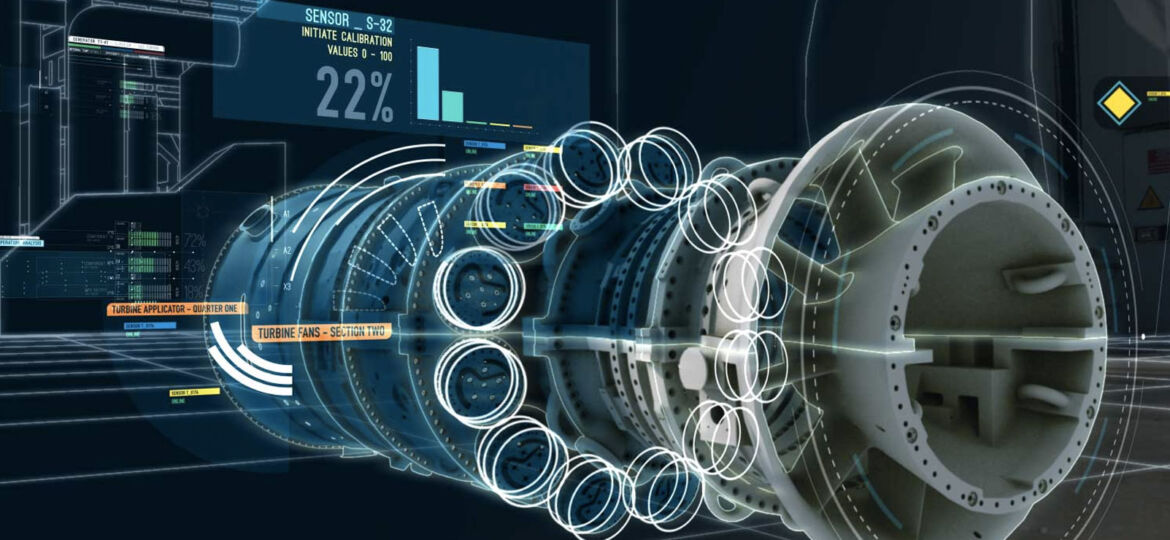
WHY THIS MATTERS IN BRIEF
As emerging technologies combine we’re entering the era where we can talk to machines in the same way we talk to other people – and the possibilities are staggering.
As more and more emerging technologies mature – or, at least improve, we are gradually entering an age where we can have natural, real time conversations with the machines around us – just like we talk to each other. And the impact that this will have on our world will be staggering, signalling nothing less than the beginning of a new era of human-machine communication and relationships. You can get a glimpse of it by watching the second video below.
Take GE’s “Digital Twin” project as an example which was shown off at their latest Minds and Machines conference in San Francisco this week. A Digital Twin, as GE describes it, is a digital representation of a physical asset.
For example, a physical jet engine or a turbine can feed real time data from all of its sensors into a CAD representation of itself back at base, then, using a mix of AI, augmented reality, big data, gesture control and natural language engineers can interact with the model using a “Digital Twin Assistant” (DTA).
While they can use gesture control and augmented reality, for example, to explode the model and investigate its inner workings they can also use the DTA to heave real time, contextual conversations with the twin about its the real life counterpart. They can have conversations with it about its status, both past, present and future, it’s overall health and even listen to it as it makes recommendations about how it could improve its operating efficiency, or minimise wear and tear.
It’s almost the same as you or I going to the doctors for a chat.
Based on Predix, GE’s multi-billion dollar industrial Internet of Things (IoT) platform, the DTA can tap into GE’s massive cloud of information and “things” – which can be anything from accessing millions of simulation runs all the way through to analysing, and learning from the machines’ other “cousins” out in the field – all to help engineers and customers improve the operating life and efficiency of everything from GE power plants and jet engines to locomotives and turbines.
The twin’s tie up with Predix makes it possible to compare virtual machines. Suppose one diesel or jet engine is running more efficiently than others. Its digital twin might reveal what adjustments, such as fuel mixture, the others can take advantage of. Engineers can even run simulations of, say, what might happen to a gas or steam turbine in a fossil fuel plant if it runs months or years at particular speeds and schedules and then, using the internet, an engineer can have a conversation with a machine in the field – even one thousands of miles away about how it’s doing.
“The digital twin model is constantly getting a stream of data, both operational and environmental,” says Colin Parris, VP at GE Software Research, “so it’s adapting itself to that type of data. The machines live virtual lives online, allowing engineers to see how efficiently each is running and if they are wearing down.”
GE partnered with Microsoft to create the DTA using the Bing Speech API and and Microsoft’s Hololens product to allow the operators to move everything off of the computer screen and step into the world of 3D augmented reality where they could manipulate the twin in real time.
“For example,” says Parris, “when there is a lot of wind, you don’t need a steam turbine but when there’s a little bit of wind, turbine use goes back up. Turning turbines on and off frequently and changing speeds put a lot more strain on the parts so now it’s breaking at four times the rate it would normally break, and it’s losing a significant amount of remaining life. Using the digital twin we can analyse and adjust everything and optimise it.”
It has to be said though that the problem feels more real when the machine itself tells you. In Parris’ example above he shows off a real turbine that was running in Southern California which, using the DTA, told him: “Damage rate has increased by four times in the last six months, if this continues, I will lose 69.9% of my useful life.”
The twin, when prompted by Parris, then goes on to explain the source of the information and recommends the best course of action to rectify the problem.
“My information is based on 58,965 simulations over a 15 year period and data from 125 of the same model turbines, I recommend either adjusting the rotor speed manually or installing an app from the GE Store that can make the changes automatically,” it says.
While at the moment the twin still relies on the operator to make the changes it’s not hard to see a future where the twin applies the fix itself. The patient is also becomming the doctor…

















Nowadays, Artificial Intelligence and other robotic machines that work in the Real Time System dominating man power.